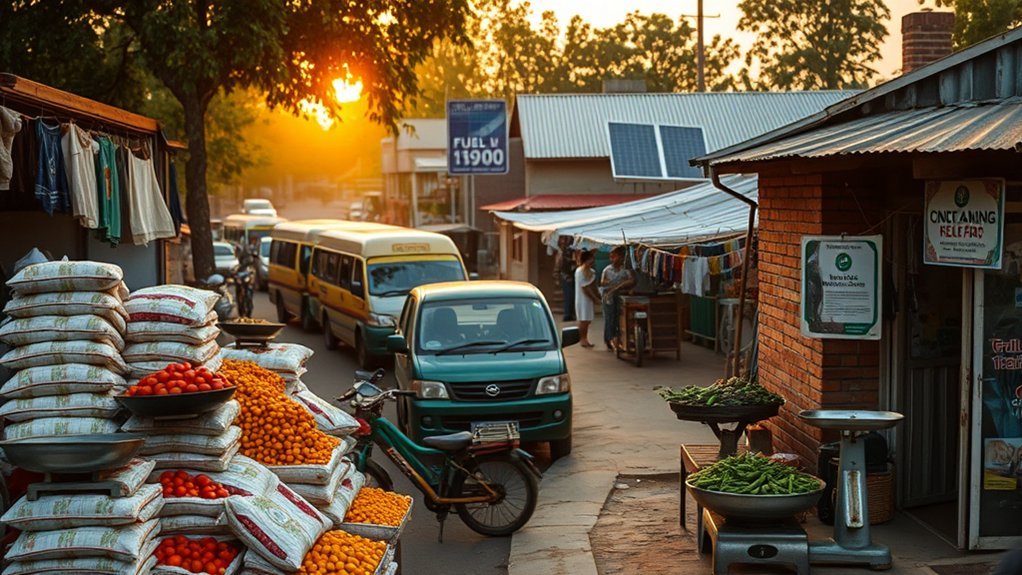You can live in Malawi on about $552 a month on average, with rent for a one‑bed city apartment near $294 and utilities under $50. Groceries and meals are far cheaper than in the U.S. (bread $1.25, basic meal ~$4.94), public transit costs about $13 monthly, and average after‑tax pay is roughly $310–$362. Some extras may require supplemental income, and the sections below break down housing, transport, food, salaries and saving tips.
Overview of Living Costs and Key Numbers
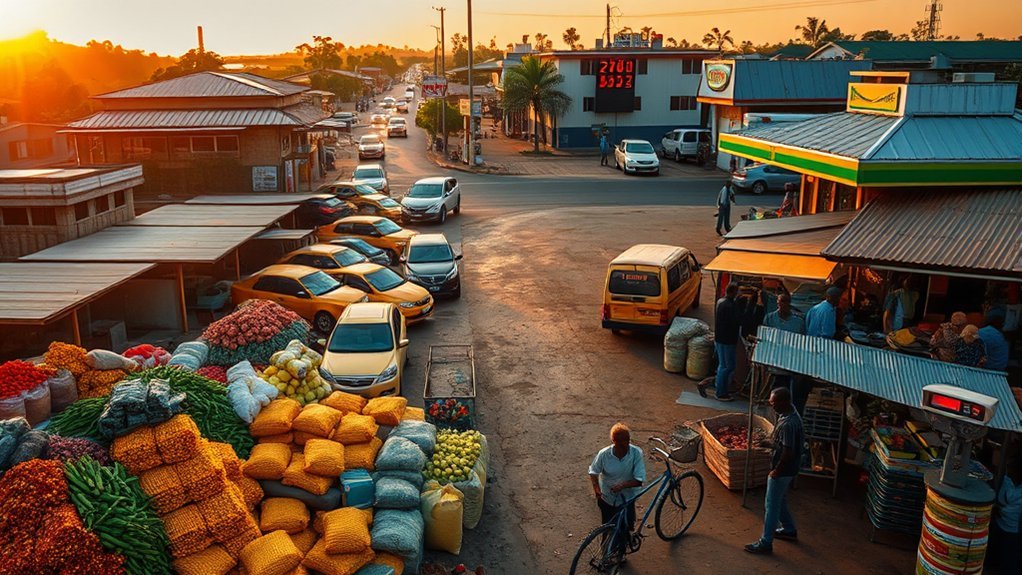
Although prices vary by city and lifestyle, you can expect living in Malawi to be considerably cheaper than in many countries: the average monthly cost of living is about $552 (roughly 2.07 times less than the world average), while the typical after-tax salary of $362 covers only about 0.7 months of those expenses.
You’ll see the cost of living reflected across everyday spending: groceries run about 45.5% cheaper than in the U.S., so a loaf of bread at $1.25 versus $3.56 stretches your food budget. Eating out is likewise affordable, with basic meals around $4.94 compared to $19.45 in the U.S.
For broader context, basic monthly expenses and discretionary spending will still outweigh average wages, so you’ll likely rely on savings or supplemental income to meet non-essential costs.
These headline costs in Malawi give you a clear snapshot for budgeting and comparing living standards internationally.
Housing and Rental Prices Across Cities
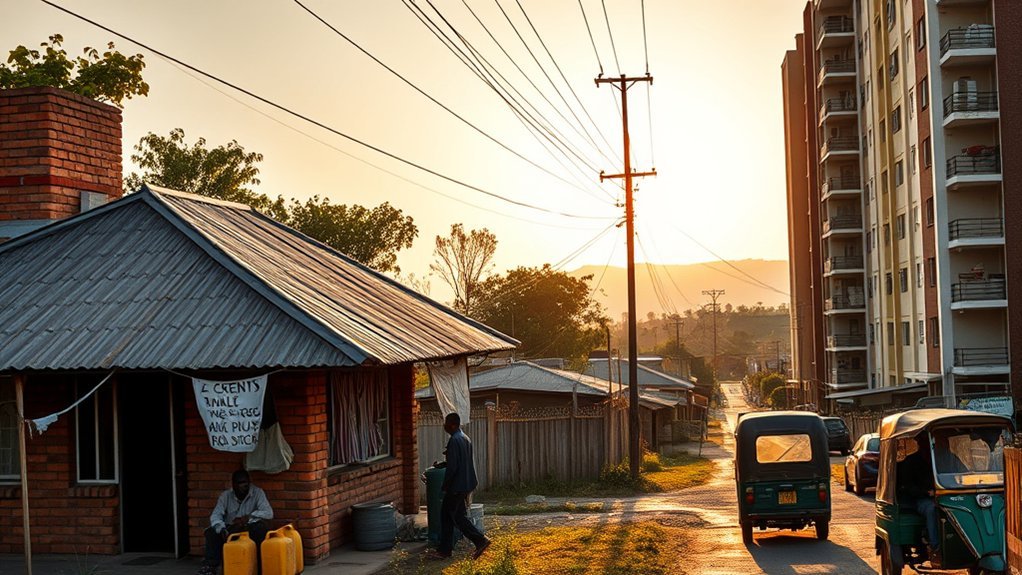
Across Malawian cities, housing stays markedly affordable: a one-bedroom city-center apartment averages $294 monthly (you can find cheaper options near $101), while a three-bedroom in the center runs about $543 compared with roughly $493 for cheaper outskirts units. You’ll find rental prices well below US levels (about 87.3% less), so housing consumes a smaller share of local budgets but still competes with an average after-tax salary of $362.
| Unit type | City-center avg | Outside/cheaper |
|---|---|---|
| 1-bedroom | $294 | $101 |
| 3-bedroom | $543 | $493 |
| Comparison to US | 87.3% less | — |
For renters, that table shows clear trade-offs: central convenience versus lower cost. If you’re considering buying, factor a 20-year mortgage rate near 12.73%—it raises monthly obligations and affects overall housing affordability in Malawi.
Monthly Utilities and Internet Costs
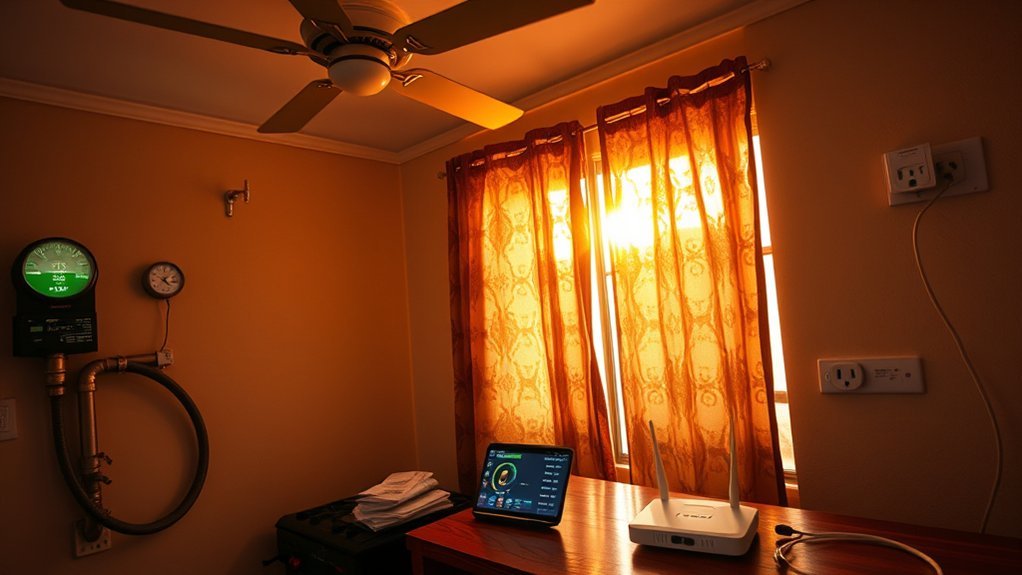
You’ll typically see monthly utility bills around $29.40 if you’re single and $45.50 for a family, with an 85m² apartment averaging $48.60—far below the U.S. benchmark of $207.90.
Mobile contracts with 10GB cost about $10.30, while home internet at 60 Mbps runs near $71.80, so you can weigh cheaper mobile data against fixed broadband depending on your usage.
To save, you’ll compare plans, limit heavy streaming on home connections, and use public transport (about $0.89 per trip) to cut overall monthly expenses.
Typical Utility Bills
Monthly utility and internet costs in Malawi are generally low: a single person typically pays about $29.40 a month for basic utilities while a family averages $45.50, and an 85 m² apartment runs around $48.60 versus $207.90 in the U.S. (a 76.6% saving).
You’ll find utility bills in Malawi drive down overall cost of living—basic water, electricity and waste services are affordable relative to many countries.
Mobile contracts with 10GB+ cost about $10.30, an 82% saving versus U.S. plans, which reduces monthly communication expenses.
While some high-speed internet packages (50 Mbps+) run near $40.30, overall utilities remain heavily influenced by local market forces and policy, keeping monthly household expenses low.
Internet Plans and Speeds
Lower utility bills in Malawi often extend to internet costs, where a 50 Mbps+ plan averages about $40.30 per month—far cheaper than comparable U.S. offerings—while many providers include unlimited data, which benefits heavy users and small businesses.
You’ll find internet plans that emphasize affordability: $40.30 is a useful benchmark for budgeting and comparing providers. Data points show urban centers deliver better speeds and reliability, so expect variability if you move to rural areas.
For expatriates and local entrepreneurs, affordable broadband lowers operating costs and expands remote-work or e-commerce options.
When choosing a plan, prioritize measured speeds, latency, and provider reputation over promotional pricing to avoid unexpected performance issues. Use local data points to validate advertised claims before committing.
Saving on Monthly Costs
If you tap into local utilities and internet options in Malawi, you can cut recurring living costs remarkably—an 85 m² apartment’s average utility bill is about $48.60 versus $207.90 in the U.S. (a 76.6% saving).
Mobile plans with calls and 10GB run roughly $10.30 compared with $57.10 in the U.S. (82% cheaper), and even internet at 60+ Mbps costs nearly the same as in the U.S. (about $71.80 vs. $71.50, a 0.5% difference).
So prioritizing local service comparisons will give you the biggest monthly savings.
Expect a local transport ticket at $13 monthly, considerably under a U.S. $65.85 pass (96.7% savings).
Pair a low utility bill with a $10.30 mobile phone contract and selective internet choices to minimize recurring expenses.
Food, Groceries and Market Prices
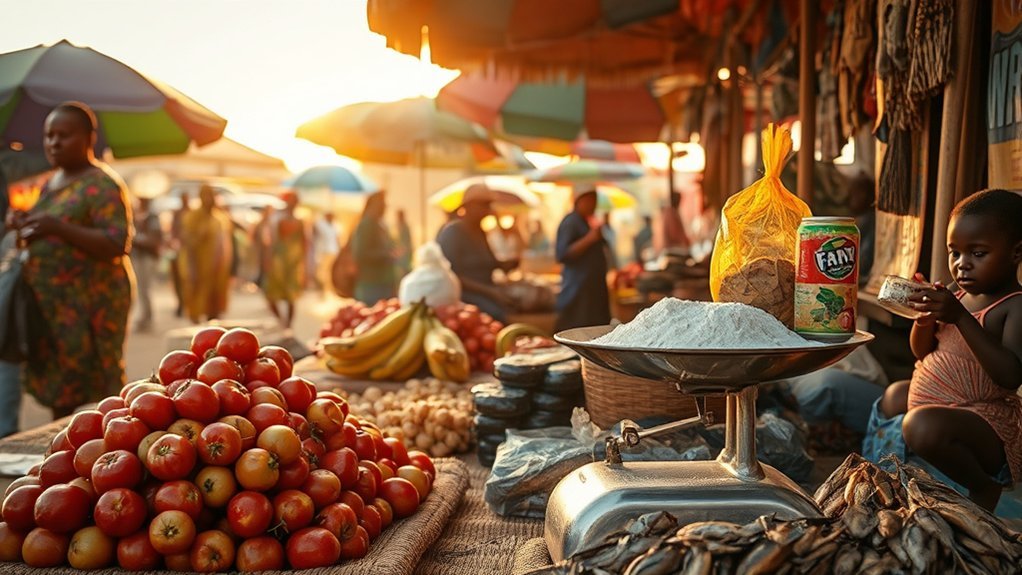
You’ll find staple market items like a loaf of bread for $1.25 and a dozen eggs for $2.18, with boneless chicken breast around $2.00 per pound, helping keep basics affordable.
Street food and casual meals are also inexpensive — expect a typical lunch for about $4.15 and a fast-food-style meal near $7.53, while dinner for two at a restaurant averages $19.60.
Given groceries are roughly 45.5% cheaper than in the U.S., you can plan a modest weekly grocery budget considerably below American costs.
Typical Market Staples
While shopping in Malawi, you’ll find basic staples cost noticeably less than in the United States: a loaf of bread runs about $1.25 (vs. $3.56 in the U.S.), a dozen eggs is roughly $2.18 (vs. $4.27), and boneless chicken breast is around $2.00 per pound (vs. $5.41).
You’ll also pay about $1.00 per liter for milk (U.S. ~$1.10) and rice roughly $1.60 per kilogram (U.S. ~$4.60).
These numbers show market staples in Malawi deliver clear savings on everyday protein, dairy and grains. If you budget by item, monthly grocery costs shrink substantially compared with U.S. prices.
Use local markets for best value; imported goods narrow the gap. Track prices by neighborhood to keep your overall food cost predictable.
Street Food Costs
When you’re eating on the go in Malawi, expect street meals to cost about $1.50–$3.00, making them a consistently affordable choice compared with restaurant dining. Individual staples like nsima with relish typically run $0.50–$2.00, fried fish or chicken skewers $1.00–$2.50, and snacks such as samosas or chapatis $0.25–$1.00 each.
You’ll find vendors near transport hubs and markets selling predictable, low-cost portions that suit daily budgets. Compare prices by location and portion size: larger skewers or meatier relishes push costs to the higher end.
Fresh fruit from local markets costs $0.10–$0.50 per piece, so you can add healthy sides without breaking your budget. Overall, street food is an affordable, practical option for routine meals.
Weekly Grocery Budget
Because groceries run far cheaper in Malawi than in the U.S., you can stretch a weekly food budget greatly: you’ll notice grocery prices are about 45.5% lower overall.
With data-driven comparisons, plan around staple costs: a loaf of bread $1.25, a dozen eggs $2.18, boneless chicken breast $2.00/lb, and rice (1 kg) $1.60.
These affordable prices mean a typical weekly budget for a single person can be notably below U.S. levels, freeing funds for rent or transport.
Focus on markets and bulk buys to maximize savings.
- Prioritize rice and bread as low-cost staples to lower per-meal cost.
- Buy eggs and chicken for protein at much cheaper rates.
- Shop local markets for the most affordable produce.
- Budget weekly to track real savings.
Eating Out and Entertainment Expenses
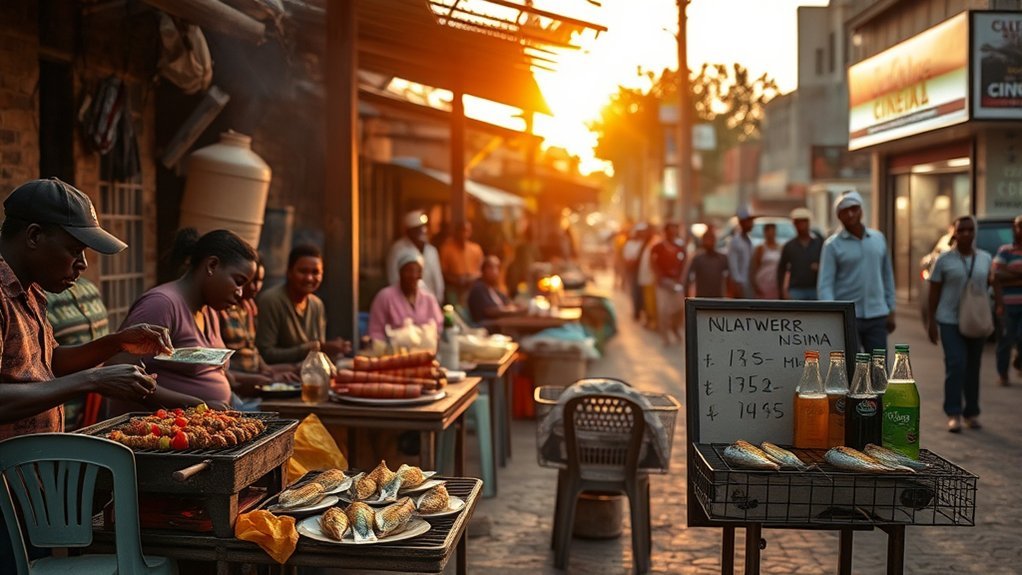
Dining out in Malawi can be markedly cheaper than in the U.S.: a mid-range meal for two runs about $21.60 (71.2% less than the U.S.), a fast-food combo about $8.60 (22.2% cheaper), and local 0.5L beer roughly $1.40 (77.6% savings), while a cappuccino averages $2.90 (45.4% less). You’ll find eating out economical: basic inexpensive meals average $4.94 versus $19.45 in the U.S., so regular dining out minimally impacts your budget. For entertainment expenses, casual nightlife, local beer and cafe culture are low-cost options; tickets to events and pricier venues increase spend but remain affordable compared with many countries. Use the table below to quickly compare common items and plan weekly or monthly allocations.
| Item | Price (USD) | U.S. Comparison |
|---|---|---|
| Mid-range meal for two | 21.60 | -71.2% |
| Fast-food combo | 8.60 | -22.2% |
| Local 0.5L beer | 1.40 | -77.6% |
| Cappuccino | 2.90 | -45.4% |
Transportation and Fuel Prices
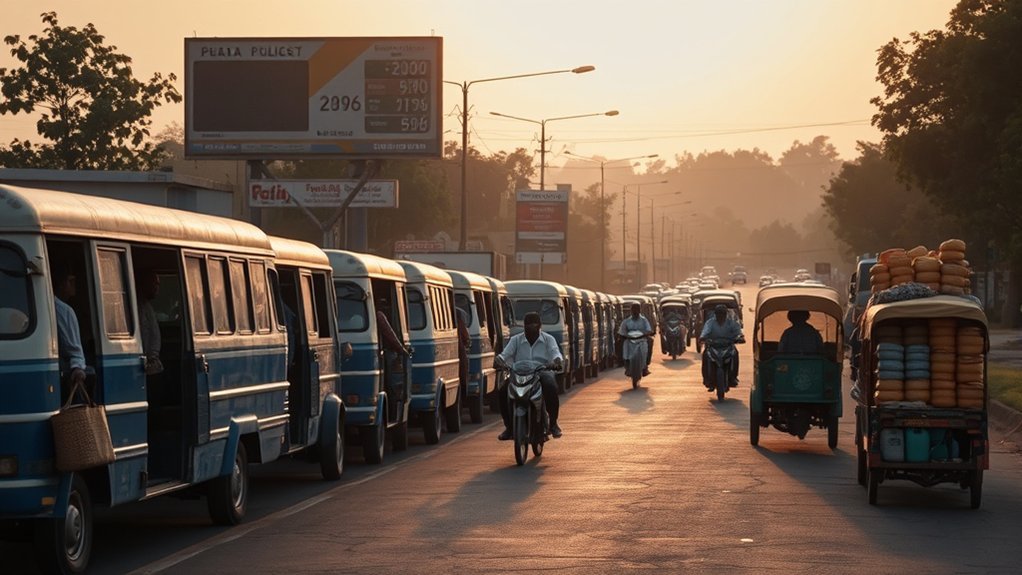
Although public transit fares are cheap — a single local ticket runs about $0.89 and a monthly pass around $13 — other transport costs can add up: an 8 km taxi ride is roughly $12.20 and gasoline sits at $1.29 per liter.
You’ll find transportation in Malawi cost-focused: routine commutes by bus or minibus keep your monthly spend low compared with the U.S. ($13 vs. $65.85), but fuel and taxi fares raise occasional trip costs.
Fuel is relatively pricey per liter, so if you drive, your cost per kilometer rises quickly. Consider the mix of ticketed public options and paid private rides when budgeting.
- Use monthly passes for regular commutes to minimize per-trip costs.
- Reserve taxis for short, urgent trips to avoid high flat fares.
- Combine errands to reduce kilometers driven and fuel consumption.
- Monitor fuel price trends; small increases materially affect driving budgets.
Salaries, Employment and Purchasing Power
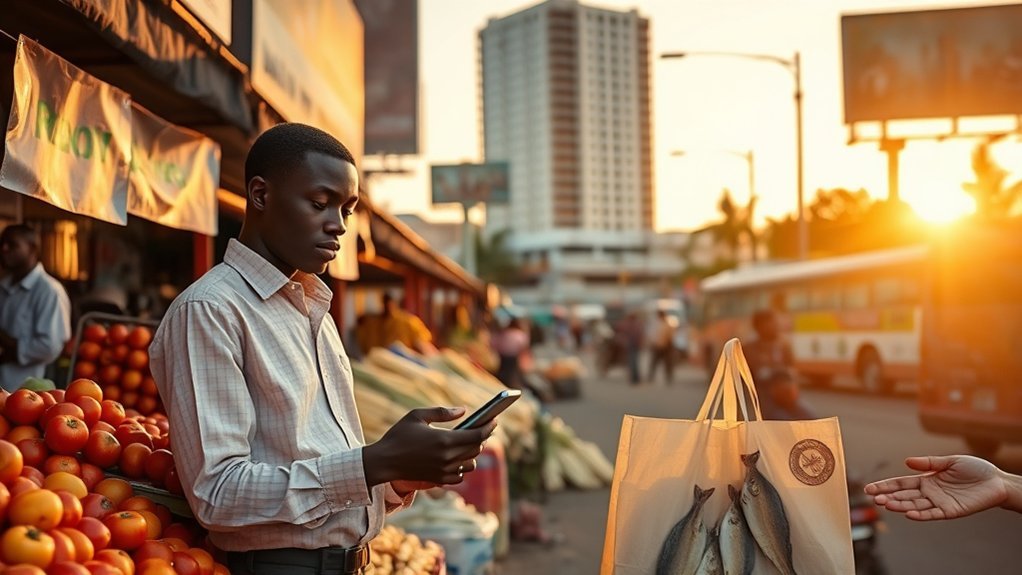
When you compare take-home pay, the gap is stark: the average monthly salary in Malawi is about $310.50 after tax versus roughly $4,336.80 in the U.S., which directly limits household purchasing power and shapes everyday choices.
You’ll find that salaries in Malawi are low relative to developed markets, so rent — about $201.20 for a 1-bedroom in the city center — consumes a large share of income.
With employment opportunities constrained, many households prioritize essentials and informal-sector earnings supplement formal pay.
Even though overall living costs are roughly 61.2% lower than in the U.S. when factoring rent, your effective purchasing power remains limited because absolute income is small.
For budgeting, you’ll need to account for tight discretionary spending and reliance on local goods and services priced for lower-income consumers.
Whether you’re relocating or planning locally, understanding salaries, employment conditions, and realistic purchasing power is essential for accurate financial planning.
Childcare, Education and Healthcare Costs
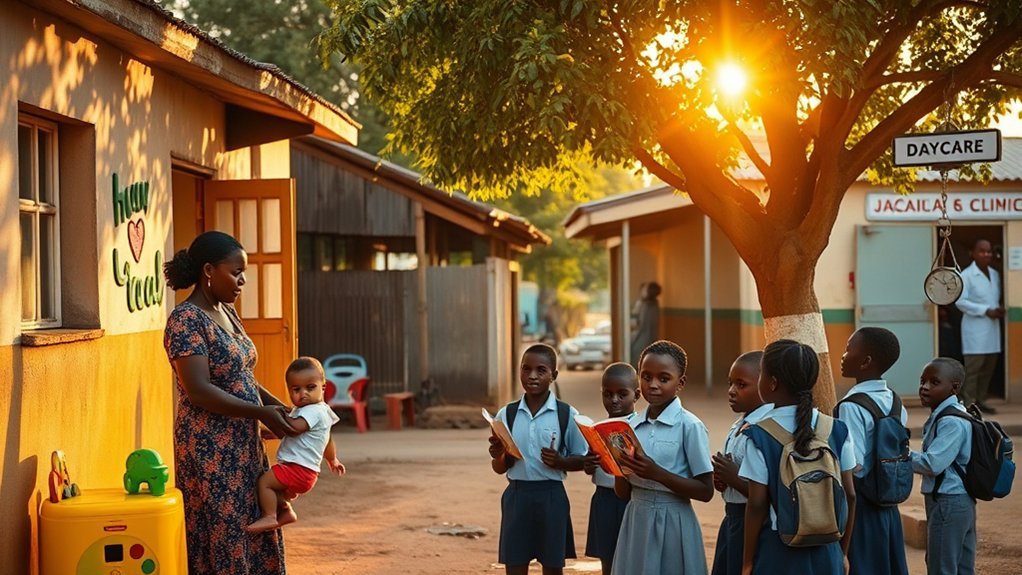
After you’ve budgeted for rent and other basics, childcare, schooling and medical bills are the next major line items that can quickly reshape a household budget in Malawi.
After rent and basics, childcare, schooling and medical costs are the next major expenses that reshape Malawi household budgets.
You’ll find private childcare (preschool) costs about $354.19 per child annually — roughly 84% cheaper than U.S. rates — while primary education is officially free but carries variable costs for uniforms, supplies and exams.
For healthcare, basic consultations run $10–$20, though many expats choose private care where a doctor’s visit averages $30. A full childhood vaccination schedule is around $50.
- Compare private childcare fees to your overall budget: $354.19/year per child.
- Factor in hidden education costs: uniforms, supplies, and exam fees can add up.
- Use public clinics for routine visits ($10–$20) or budget $30 for private consultations.
- Plan vaccinations at about $50 for a typical childhood schedule.
Be explicit in forecasting these line items to avoid underestimating annual household expenses.
Currency, Banking and Money-Saving Tips
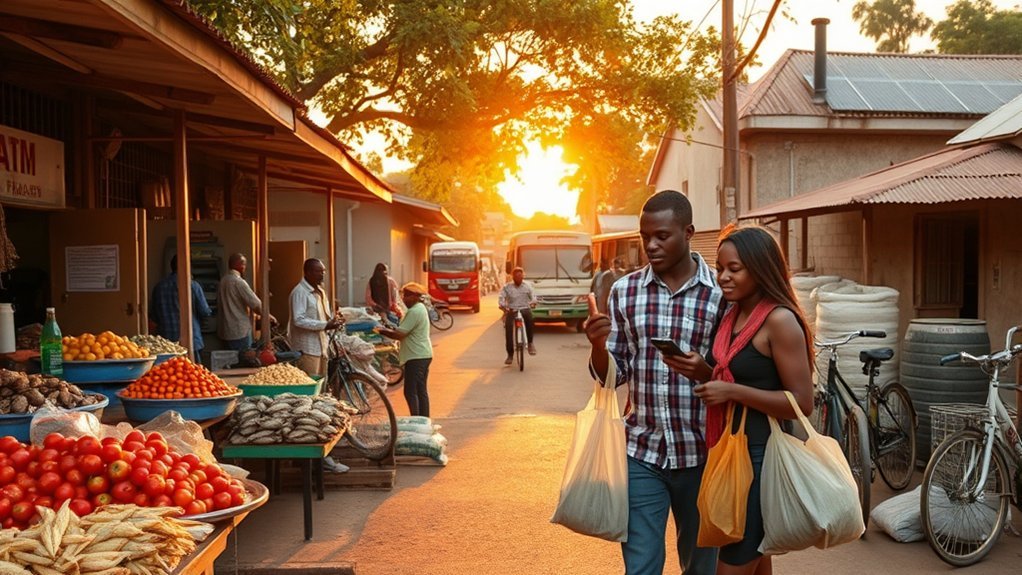
Because exchange-rate swings directly affect your budget, track the current 1 USD = 1,733.67 MWK rate and factor conversion costs into every monthly forecast; use that baseline to price rent, groceries and utilities in MWK.
Open a local bank account to cut exchange fees and handle recurring payments in Malawian Kwacha—banking reduces reliance on cash and lowers ATM withdrawal costs.
Supplement banking with mobile money services, which dominate peer-to-peer transfers and merchant payments and often cost less than card transactions.
Carry modest cash for daily purchases, especially in rural areas and local markets where cards aren’t accepted; cash lets you negotiate and capture lower prices on fresh produce.
For money-saving tips, buy groceries at local markets, plan purchases around seasonality, and consolidate transfers to minimize conversion fees.
Track monthly spending in MWK, set a contingency for exchange-rate volatility, and prioritize local currency income or accounts to stabilize your real cost of living.
Frequently Asked Questions
Is Malawi Cheap to Live In?
Yes — you’ll find Malawi cheap to live in; cost of living and daily expenses run low, groceries and meals cost far less, and affordable housing keeps overall monthly expenses around $552, much lower than in the U.S.
How Much Money Does the Average Person in Malawi Make?
Guess what? You make about $362 monthly on average in Malawi. That average income reflects limited job opportunities and stark economic challenges, so you’ll need tight budgeting, local cost comparisons, and realistic financial planning.
Is Malawi a Good Country to Live In?
Yes — you’ll find decent quality of life if you value low costs, rich cultural experiences, and a small expat community; data shows affordable housing, cheap utilities and dining, but modest wages and services can limit expectations.
How Much Does It Cost to Build a 2 Bedroom House in Malawi?
You’d spend roughly $25,000–$30,000 to build a 2‑bedroom house in Malawi; construction costs depend on housing materials, location, and labor expenses, with urban sites and higher-quality materials driving the price upward.
Conclusion
You’ll find Malawi both affordable and surprisingly uneven: basic groceries or a matatu ride can cost pennies compared with city rents or private school fees that climb to middle-income levels. Use monthly averages—rent $100–$400, utilities $30–$80, internet $20—to plan realistically, but expect wide local variance. With average salaries low, prioritize housing and transport, shop markets, and compare schools; small choices yield big savings and preserve your purchasing power.

